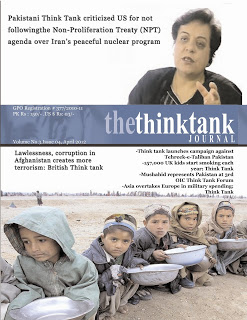The Israel-Gaza deal, finalized in October 2025 under U.S. mediation, aimed to establish a ceasefire, facilitate hostage exchanges, and allow humanitarian aid into Gaza. As of late October 2025, the agreement faces significant challenges, including accusations of violations from both sides.
Does Israel Want to Withdraw from the Gaza Deal?
Recent actions and statements indicate mixed signals regarding Israel’s commitment to the October 2025 ceasefire agreement. While the deal has led to the exchange of remains and some hostages, with Israel returning over 195 Palestinian bodies and Hamas releasing captives, tensions persist. Israeli officials have emphasized upholding the truce but have responded to alleged violations by Hamas, such as attacks on forces, with military actions. For instance, following claims of militant incursions, Israel conducted airstrikes but later announced a return to ceasefire enforcement.
Critics argue that Israel’s restrictions on aid and partial troop presence suggest a reluctance to fully implement withdrawal terms. The agreement calls for a phased Israeli pullback from Gaza, contingent on demilitarization and multinational oversight, but implementation has been slower than anticipated. U.S. officials have noted that the truce is “going better than expected” and can hold, urging both parties to comply. However, Palestinian sources claim Israel is failing to meet obligations, such as allowing 600 aid trucks daily, with actual deliveries falling short. As of October 22, 2025, no formal withdrawal from the deal has been declared, but ongoing disputes raise questions about long-term adherence.
Did the Gaza Deal Fail Israel in Its Goals?
The October 2025 agreement sought to achieve several Israeli objectives, including the release of all hostages, demilitarization of Gaza, and enhanced security. While it secured the return of 20 living hostages and remains, broader goals appear unmet. Hamas has stated that Israel failed to accomplish its wartime aims, such as eradicating the group, despite two years of conflict. The deal’s phased structure allows Israel to maintain some control, but accusations of continued starvation tactics and incomplete withdrawals suggest incomplete success.
Previous ceasefires, like the January 2025 truce, collapsed when Israel resumed operations after perceived ineffectiveness. In this iteration, Israel has expressed concerns over losing operational freedom in Gaza, constrained by international pressure to end the war. Analysts note that while hostage recovery was a win, the agreement has not fully demilitarized Hamas or prevented sporadic attacks, leading to over 80 reported violations in the first 11 days. This has strained the truce, with both sides accusing each other of breaches, indicating the deal has not fully aligned with Israel’s stated goals of total security and disarmament.
How Many More Days
This question is highly speculative, as annexation timelines depend on military, political, and international factors. Without the October 2025 deal, Israel might have pursued partial or full control of Gaza, based on pre-agreement discussions. In July 2025, Israeli leaders considered annexing parts of Gaza if hostage talks failed, proposing gradual integration of areas like northern Gaza. Reports suggested warnings to Hamas that non-compliance could lead to annexation, with plans to declare intentions unless a truce was reached.
To estimate a hypothetical timeline, consider Israel’s military progress prior to the deal. By mid-2025, Israel controlled significant portions of Gaza, including border areas, following operations that displaced populations and demolished infrastructure. If unchecked, full annexation—defined as administrative control and settlement—could have taken 60-120 days, based on the pace of earlier advances in areas like Rafah and Beit Hanun. For example, clearing and securing northern Gaza took months in prior phases; extrapolating, complete annexation might require an additional 90 days from the deal’s signing date, assuming no major resistance or international intervention. However, global pressure, including U.S. mediation, likely accelerated the truce, preventing escalation. This analysis assumes sustained military momentum, but real-world variables like Hamas resistance could extend it indefinitely.
Has Israel Begun Withdrawing from the Deal?
Evidence points to partial disengagement through aid restrictions, which violate the agreement’s humanitarian provisions. The deal mandates 600 aid trucks daily, but deliveries have been halved or halted at times. On October 19, 2025, Israel temporarily suspended aid following airstrikes, citing Hamas violations like attacks on soldiers. Aid resumed under U.S. pressure, but restrictions persist, with crossings like Rafah remaining closed to people.
International rulings, including a October 22, 2025, decision, affirm Israel’s obligation to allow basic necessities into Gaza as the occupying power. Despite this, aid groups report de-registration of organizations and ongoing blockades, exacerbating food shortages. Palestinian officials describe this as “starvation as a method of warfare,” with aid cut by 50% in the deal’s first week. While Israel denies intentional withdrawal, these actions signal a de facto retreat from full compliance, testing the agreement’s framework.
After Israel’s Airstrikes?
Despite recent airstrikes killing at least 26 in Gaza on October 19, 2025, the agreement has survived initial challenges, with aid resuming and both sides recommitting under U.S. oversight. Israel announced a return to ceasefire enforcement post-strikes, blaming Hamas for provocations, while Hamas denies involvement and accuses Israel of breaches.
The truce’s resilience is evident in continued body exchanges and U.S. efforts to salvage it, including envoy visits. However, over 1,000 violations reported since October 8, 2025, and persistent aid issues raise doubts. Historical precedents, like the March 2025 breakdown after airstrikes, suggest fragility. For the deal to endure, key conditions—full withdrawals, demilitarization, and consistent aid—must be met. As of October 23, 2025, it remains intact but precarious, dependent on mediation and mutual restraint.
The Israel-Gaza deal of 2025 is under strain from incomplete implementations and mutual accusations. While it has achieved partial hostage releases, ongoing aid cuts and military actions highlight risks of collapse.



